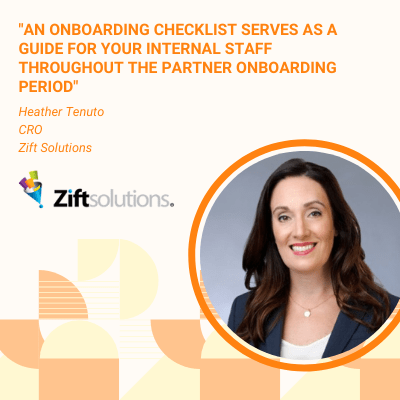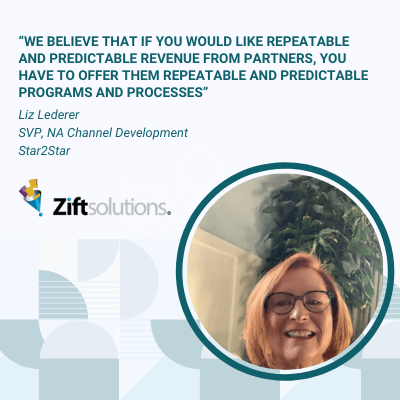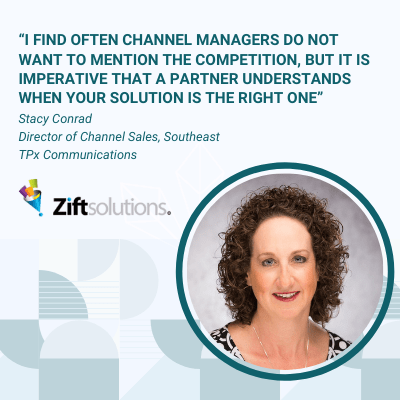Once you’ve buttoned down your strategy for recruiting channel partners, you’re ready to establish your channel partner onboarding process. Onboarding is pivotal to your partners’ success in selling your business-to-business (B2B) services, so it must be a focal point of your channel development program and not an afterthought. The old adage “don’t re-invent the wheel” is more apt than ever here, as we spoke with several channel leaders who shared similar views on partner onboarding best practices. But, let’s start at square one:
What is Channel Partner Onboarding?
Channel partner onboarding is a multistep process to initiate and integrate new partners into your company’s partner program. It sets the ground rules and the tone for your relationship. Any major hiccups in this process can compromise your future with a new partner and send them into the welcoming arms of a competitor.
It’s important to understand that onboarding partners is not the same as onboarding direct business customers so they can use your cloud apps or set up hardware. Partner onboarding done well requires more than a couple of web meetings, portal logins and training links; it’s a months-long process that requires both of your organizations to get to know the other so that you can go to market as partners.
Partner onboarding begins in earnest after the agreement is signed. Typically, it includes business planning, sales training, technical training, systems integration (if needed) and usually extends to marketing support, lead generation, co-selling and initial wins.
When done poorly, partner onboarding can cost dearly, including:
- Wasted time and effort
- Lost partner confidence
- Lost sales opportunities
- Unrealized revenue potential
- Damaged market reputation
When done well, channel partner onboarding offers many rewards, including:
- Productive partners who understand your value proposition and can sell independently
- Quicker time to value and return on investment (ROI) from your partner program
- Partner loyalty and reduced customer churn
- Partner advocacy and endorsement, which can ease the recruitment process
What to Consider in the Channel Partner Onboarding Process
The axiom, “garbage in, garbage out,” aptly explains why your partner program must be well defined before developing your partner onboarding process. Without clear rules of engagement (ROEs) and operational processes, it will be challenging, if not impossible, to set up partners for success.
Here are examples of questions you should ask and answer:
- If your company sells through multiple channels, how is channel conflict managed?
- How is training delivered? Must partners be certified to sell your solutions? How long does training and/or certification take?
- Do you offer market development funds (MDF)? If so, how do partners qualify to receive MDF?
- Do you offer SPIFFs or bonuses? How do partners qualify for these incentives? Are incentives attractive, achievable? Will they motivate new partners to sell?
- How will you and your partner communicate? Will you accommodate partner preferences or set standards across the board?
- How do you send and receive reports between your company and the partner organization?
- How do partners get assistance? Are there support systems they need to access or personnel they need to contact?
- How will you handle differing levels of mindshare, interest and engagement among your partners? Will you offer tiers of partnership with resources allotted according to their effort? Will all partners be treated the same?
- Who is responsible for onboarding new partners? How many partners can they onboard at once? Can they keep up with the volume of recruits?
Answers to these sorts of questions will dictate the onboarding process, capacity and pace.
Partner Onboarding: The First 90 Days (& Beyond)
Plan, plan, plan. You need to set key milestones for your critical partnerships. Specifically, mapping expectations for 30 days, 60 days, 90 days, six months and 12 months will increase the likelihood of success.
The Channel Company’s IPED Consulting and Research division’s 2017 guide on channel partner program onboarding emphasizes the importance of the first 90 days. “The first 90 days of your relationship directly influence whether the partner will ever become productive.”
What should you do in the first 90 days? We consulted a panel of channel experts who offered the following advice:
 Day 1-30: During the first 30 days, onboarding typically consists of:
Day 1-30: During the first 30 days, onboarding typically consists of:
- Conducting the discovery
- Introducing members of your respective teams
- Assessing vendor-partner alignment
- Creating a business plan with the partner
- Providing access to the partner portal and relevant sales and marketing materials
- Starting initial sales and technical training
“The first 30 days are pure discovery and relationship building,” says Oanh McClure, Director of Alliances and Channels at Zscaler, a provider of cloud security services. “It’s harder to sell a partner on selling your product than sell [your] product to an end-user. You have to enable a partner to know so much that they offer your product first.”
Day 31-60: By day 60, according to our panel, onboarding moves to:
- Discussing longer-term business planning
- Reviewing use cases and case studies
- Beginning demand generation
- Engaging sales opportunities together
Patrick Sheehan, Senior Director of Field Channel Sales for cloud communications provider Intermedia, says following the orientation period, he likes to “get the sales team trained, engaged and excited about making money” while helping his partner execute demand-generation campaigns and ensuring operations are aligned to get some early wins.
Day 61-90: By day 90, our panel generally agrees that onboarding activities include:
- Selling collaboratively
- Growing the sales pipeline
- Celebrating an initial win
6 Months: Day 91 through 180 is when the training wheels slowly come off and partners put into practice what they’ve learned in the first three months and develop confidence and competence to sell independently.
12 Months: At the end of the first year, it’s time to revisit the business plan with new goals and milestones for year two.
The Importance of a Channel Partner Business Plan
A critical component of channel partner onboarding is developing a joint business plan outlining steps for partners, supported by your team, to reach short- and long-term goals from selling your solutions.
 The business plan is the road map for your partnership, says Ayesha Prakash, Vice President of Global Channels & Alliances for KELA, an award-winning Dark Net threat intelligence provider. “Sticking to the plan and tracking progress and being consistent” are key, Prakash says.
The business plan is the road map for your partnership, says Ayesha Prakash, Vice President of Global Channels & Alliances for KELA, an award-winning Dark Net threat intelligence provider. “Sticking to the plan and tracking progress and being consistent” are key, Prakash says.
A solid business plan also lays the groundwork for trust and accountability, adds Robert Maute, former Senior Vice President of Channel Sales for Evolve IP. He says, “The business plan should answer why you are establishing the partnership, agreed-upon goals and benchmarks, how you will work together to accomplish these goals and how to measure success.”
Create (and Use!) a Channel Partner Onboarding Checklist
One of the hallmarks of a successful channel partner onboarding process is that it’s repeatable and easy to follow. Creating a channel partner onboarding checklist is a smart way to keep the process on track.
“An onboarding checklist serves as a guide for your internal staff throughout the partner onboarding period,” says Heather Tenuto, Chief Revenue Officer for enterprise channel management platform provider Zift Solutions. “It also helps your partners to understand the process from end to end and see critical milestones at a glance.”
 Partner Onboarding Portal – To Use or Not to Use?
Partner Onboarding Portal – To Use or Not to Use?
According to a Forrester WaveTM report on Partner Relationship Management (PRM) released in November 2020, channel programs on average have more than 100 distinct elements, with onboarding being among them.
“With so many moving parts, manual processes are prone to human error,” says Zift Solutions’ Tenuto. “This potential for mistakes is multiplied if your channel program is successful and you’re onboarding partners en masse. Using a partner onboarding portal to scale with you as your company grows is vital for long-term success.”
9 Partner Onboarding Best Practices from Channel Leaders
To help you create an effective channel partner onboarding process, we spoke with 10 accomplished channel business leaders about their experiences building and running partner onboarding.
Nine partner onboarding best practices surfaced from these interviews.
- Keep in Mind Partner Onboarding is an Ongoing Process
- Establish Simple & Repeatable Processes
- Designate Onboarding Process Responsibilities & Ownership
- Gauge Partner Focus & Alignment with Your Company
- Be Upfront About Solution Strengths (& Weaknesses)
- Provide Multiple Ways to Learn About Your Solutions
- Work with Master Agents & Distributors to Collapse Timelines
- Monitor & Track Onboarding Performance & Feedback
- Remember to Be Human
Best Practice 1: Keep in Mind Partner Onboarding is an Ongoing Process
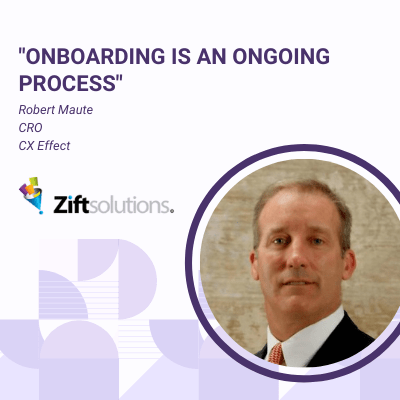 Your partner onboarding process is exactly that – a process – that will last for weeks or months after your partner signs on the dotted line and before they become productive. “It’s a marathon, not a sprint,” should be your mindset going in.
Your partner onboarding process is exactly that – a process – that will last for weeks or months after your partner signs on the dotted line and before they become productive. “It’s a marathon, not a sprint,” should be your mindset going in.
“Onboarding is an ongoing process,” says channel veteran Maute. “It is not a single meeting with partner leadership or a training session with their sales team that magically turns on the revenue stream.”
Partner onboarding not a single event, nor is it an isolated exercise; it’s an integral part of your entire partner program and an essential tool for both short- and long-term goals.
“Don’t think of onboarding by itself,” says Intermedia’s Sheehan. “I’ve found that looking at channel development holistically allows you to create the most effective onboarding process and successful outcomes.”
Best Practice 2: Establish Simple & Repeatable Processes
Complexity is the enemy of the good when creating an easily replicable partner onboarding process. Panelists cautioned against building a 90-step program unless absolutely necessary and encouraged automating as many steps as possible using a Partner Management Solution like ZiftONETM.
“Keep it simple,” says KELA’s Prakash. “Be strategic and consistent with your onboarding. The front-end work can make all the difference on how the partner engages with you in the future.”
Liz Lederer, Senior Vice President of North American Channel Development for cloud communications provider Star2Star, agrees that upfront effort to develop effective procedures can pay dividends. “We believe that if you would like repeatable and predictable revenue from partners, you have to offer them repeatable and predictable programs and processes.”
 Best Practice 3: Designate Onboarding Process Responsibilities & Ownership
Best Practice 3: Designate Onboarding Process Responsibilities & Ownership
Select a point person, ideally a project manager, in your organization to manage onboarding for a given partner from start to finish. Establishing ownership eliminates confusion and creates accountability.
“This doesn’t mean the burden of onboarding falls on one person – it takes an interdepartmental effort to complete the process,” said Zift Solutions’ Tenuto. “However, having one competent individual overseeing the effort will keep the process moving. They’ll know the onboarding status and loop in key parties to avoid delays.”
Best Practice 4: Gauge Partner Focus & Alignment with Your Company
Vendors have high hopes that every partner they bring onboard will become an advocate for their products and bring in tens of thousands of dollars in new monthly recurring revenue. These prized partners are out there, but it’s folly to believe that outstanding sales performance magically happens. In fact, our panel says vendor-partner alignment is a prerequisite to sales growth.
Chad Gagnon, Senior Channel Advisor at Evolve IP, starts an engagement by finding out where his company’s solutions fit into the partner’s go-to-market model. “Personally, I like to really understand the partner’s focus before anything else,” he says. “This allows me to make sure … what I review with them fits into their day-to-day.”
Intermedia’s Sheehan also recommends offering different paths for partners based on their interests. “Having a well-defined onboarding process with ‘tracks’ that address both the long-tail and the high-potential partners — and communicating it to partners upfront — is key to proper alignment.”
According to Gagnon, a key factor in determining alignment is comparing the Ideal Customer Profile (ICP) for both companies. “Once you are in sync with [the ICP], the focus and planning are easy,” Gagnon says. “You know the process is working well when you are top of mind for a partner and the opportunities are great fits.”
 Maute suggests alignment with a new partner also means getting buy-in from the whole organization, not just the signatory on your contract. “It is an ongoing process that involves engaging each area in the partner organization (executives, sales, marketing, sales engineering, etc.) to understand how to best align and build mindshare,” he says.
Maute suggests alignment with a new partner also means getting buy-in from the whole organization, not just the signatory on your contract. “It is an ongoing process that involves engaging each area in the partner organization (executives, sales, marketing, sales engineering, etc.) to understand how to best align and build mindshare,” he says.
That said, not every partner you recruit is going to be a fit, which can be a tough pill to swallow after you’ve spent countless hours convincing and converting a prospective partner, only to have them not bring in any meaningful deals. Janet Schijns, CEO of channel consulting firm JS Group, reminds vendors that partner acquisition isn’t a numbers game.
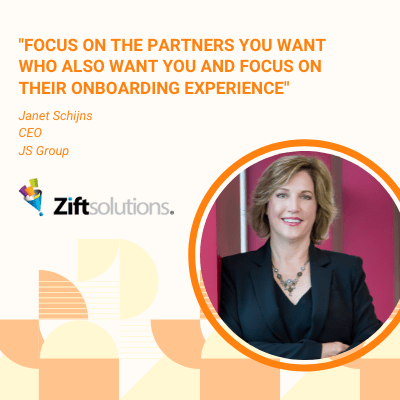 “Focus on the partners you want who also want you and focus on their onboarding experience,” says Schijns. “The channel is not a game of onboarding as many partners as you can; it’s about getting sales and revenue. The onboarding process is the start of that profitable relationship.”
“Focus on the partners you want who also want you and focus on their onboarding experience,” says Schijns. “The channel is not a game of onboarding as many partners as you can; it’s about getting sales and revenue. The onboarding process is the start of that profitable relationship.”
Best Practice 5: Be Upfront About Your Solution’s Strengths (& Weaknesses)
Your “innovative, ground-breaking, revolutionary” solution typically has plenty of competition. So, you must help your partners understand how you compare and what sets you apart. Arm them with resources, including:
- Effective solution applications and use cases
- Industry verticals for the best fit
- Onboarding and deployment timelines
- Customer resources and availability of support
- Potential return on investment
- Solution pricing
Hilary Gadda, Director of National Channel Development for TPx, a nationwide managed services provider, recommends cutting to the chase by outlining how your company can help them win deals. Instead of telling partners about everything in the portfolio, she explains in what situations TPx is a good fit or where “TPx shines” to help partners close deals. “Time is money for partners, and I need to respect that,” she says.
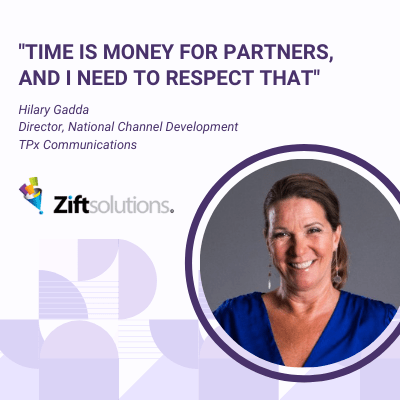 In addition to pointing out where your company is a good fit, you should be transparent about where it isn’t and even admit when a competitor is a better fit, says Stacy Conrad, Director of Channel Sales, Southeast for TPx. “I find often channel managers do not want to mention the competition, but it is imperative that a partner understands when your solution is the right one compared to X and Y,” Conrad says. “There are so many choices to sell today; if the partner can’t understand the key differences between the 15-plus UCaaS providers, for example, how can you expect them to know when to sell your company and why?”
In addition to pointing out where your company is a good fit, you should be transparent about where it isn’t and even admit when a competitor is a better fit, says Stacy Conrad, Director of Channel Sales, Southeast for TPx. “I find often channel managers do not want to mention the competition, but it is imperative that a partner understands when your solution is the right one compared to X and Y,” Conrad says. “There are so many choices to sell today; if the partner can’t understand the key differences between the 15-plus UCaaS providers, for example, how can you expect them to know when to sell your company and why?”
 Best Practice 6: Provide Multiple Ways to Learn About Your Solutions
Best Practice 6: Provide Multiple Ways to Learn About Your Solutions
Keep in mind that people, including sales partners, don’t learn in the same way or at the same pace. Some partners would rather attend live scheduled training, while others prefer to watch video tutorials or read product guides in your learning management system (LMS) on their own time. Still, others are inclined to scour your partner portal and website for informative sales and channel marketing collateral.
Making multiple options available to your partners will cover your bases. Experiment with different formats and delivery methods to hit on the best curriculum.
Evolve IP’s Gagnon, for example, has found that live training works best if narrowly focused. “I like to set up multiple sessions with the team to help focus on one of our solution sets,” he says. “This keeps the sessions short and interactive, and the partners are more engaged.”
Intermedia’s Sheehan advocates self-service to accelerate results. “Providing effective self-service enablement via LMS in combination with a robust partner platform that facilitates sales and marketing engagement is fundamental for all partners to start selling quickly,” Sheehan says.
Best Practice 7: Work with Master Agents & Distributors to Collapse Timelines
Master agents and distributors often take on pre- and post-sales functions such as quoting, sales engineering, ordering, project management and installation for partners so they can shortcut some of the processes and start selling faster.
JS Group’s Schijns believes vendors should capitalize on distributor relationships to speed ROI. “Working with distribution is key for most vendors; they shorten that timeline for onboarding and save the vendor significant funds managing the channel at large through onboarding and first sale,” she said.
Best Practice 8: Monitor & Track Onboarding Performance & Feedback
No doubt your organization tracks CSAT scores, surveys customers and audits call center logs to ensure your customer-facing staff delivers top-tier service. Operate the same way with your partners.
“Having a process is great, but you have to monitor its effectiveness over time,” says Intermedia’s Sheehan. “To do that I’ve found it is critical to manage the entire channel development process, including onboarding, through business applications that enable you to monitor KPIs, identify trends and ensure positive outcomes.”
 Besides sales, gathering metrics and data about how the partners interact with your staff, training and tools can be a leading indicator. “The level of engagement by the partner is a good way to gauge if the process is working,” says KELA’s Prakash.
Besides sales, gathering metrics and data about how the partners interact with your staff, training and tools can be a leading indicator. “The level of engagement by the partner is a good way to gauge if the process is working,” says KELA’s Prakash.
Best Practice 9: Remember to Be Human
When selling technology, it’s easy to forget that your “solution” is not only a piece of software or hardware; it’s also your people. And the character of your people can make or break the partnership.
“Yes, our business is tech, and we sell a product, but we are in the business of people,” says Zscaler’s McClure. “Nobody is loyal to companies. People are only loyal to people. A partner will not compromise for a partner program. They will compromise to demonstrate future success with you.”
In other words, if your people are pleasant and helpful, partners are more likely to want to work with your company even if your technology is not best-in-class, and they’re more likely to forgive an honest mistake on an order or install. On the other hand, if your team is difficult to reach or treats partners as second-class sellers, they’ll leave even if your solution is the market leader.
A mission statement is not enough; you need to demonstrate your people skills every day in many ways. When your software has a glitch, how do you handle incoming service calls? When your edge device gets shipped to the wrong address, how do you deal with that? Do you treat both your large enterprise and one-person shop partners with equal importance? Did you welcome and integrate your partner into your organization?
TPx’s Conrad drives this last point home: “It is important the partner feels like part of a community, not just a one-on-one relationship with one channel manager. A partner must feel comfortable with several areas of the company if they are going to put their business and their paycheck in your hands.”
9 Partner Onboarding Best Practices – Download
Below, download our one-pager to help these practices stay top of mind while creating your channel partner onboarding practice.
Following these tips can put you a step ahead of your competition in building and maintaining revenue-generating partner relationships.
Laz Gonzalez
Laz Gonzalez is Chief Strategy Officer at Zift Solutions. A prominent industry analyst and thought leader, Gonzalez brings unparalleled channel expertise to Zift and has served as strategic adviser to leading B2B channel programs worldwide.

